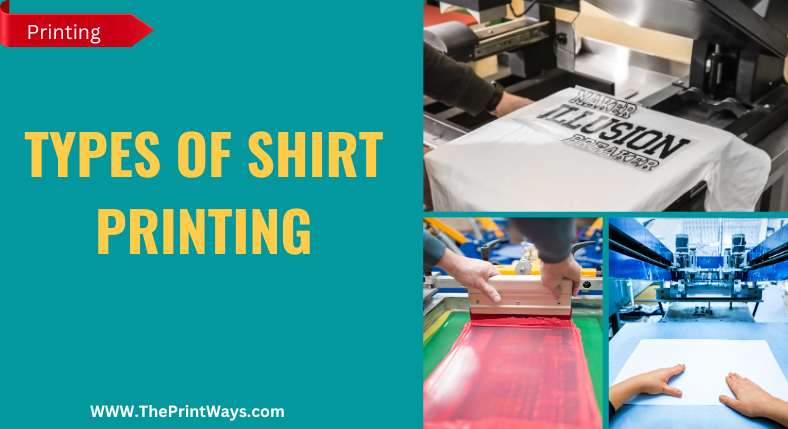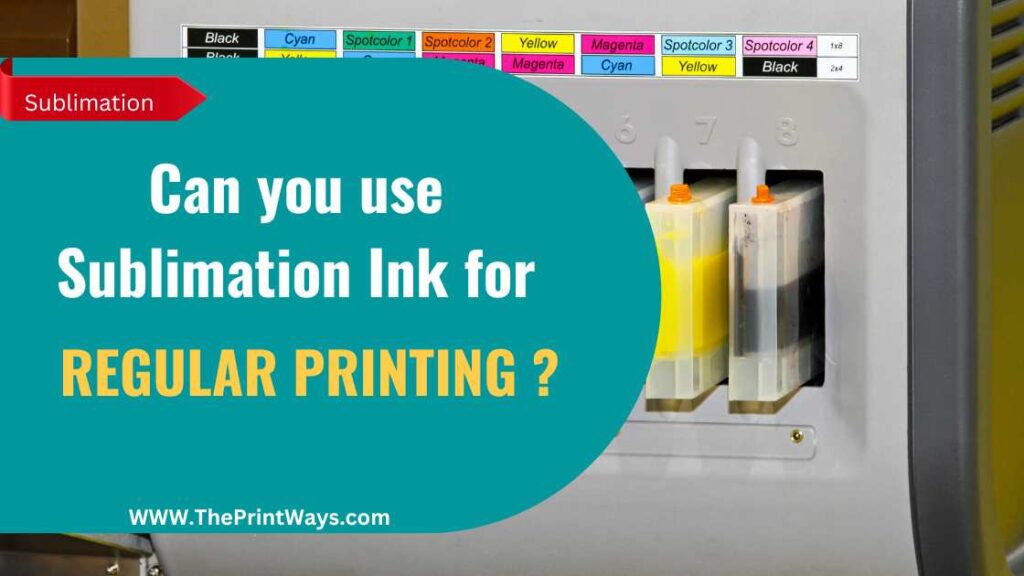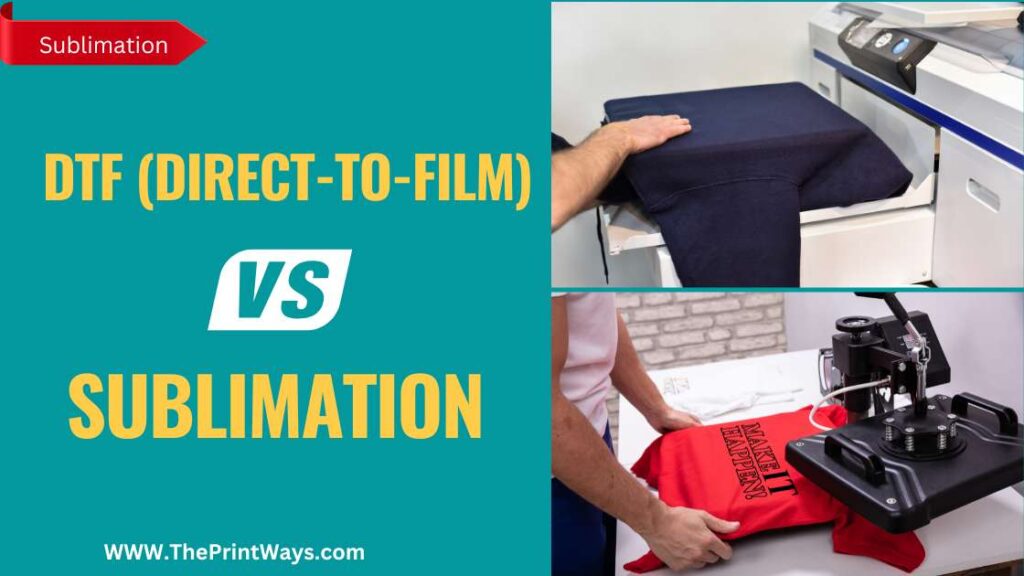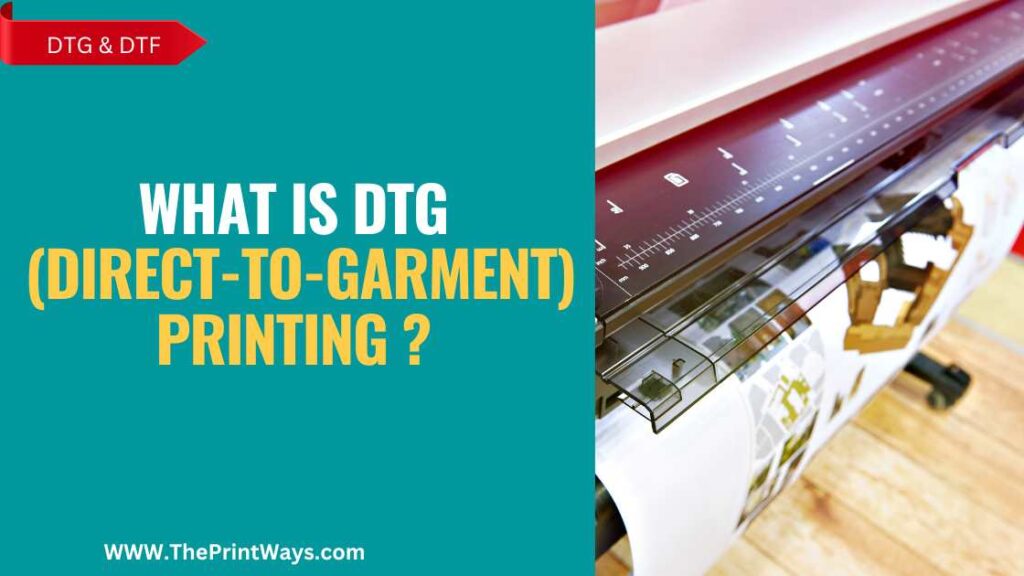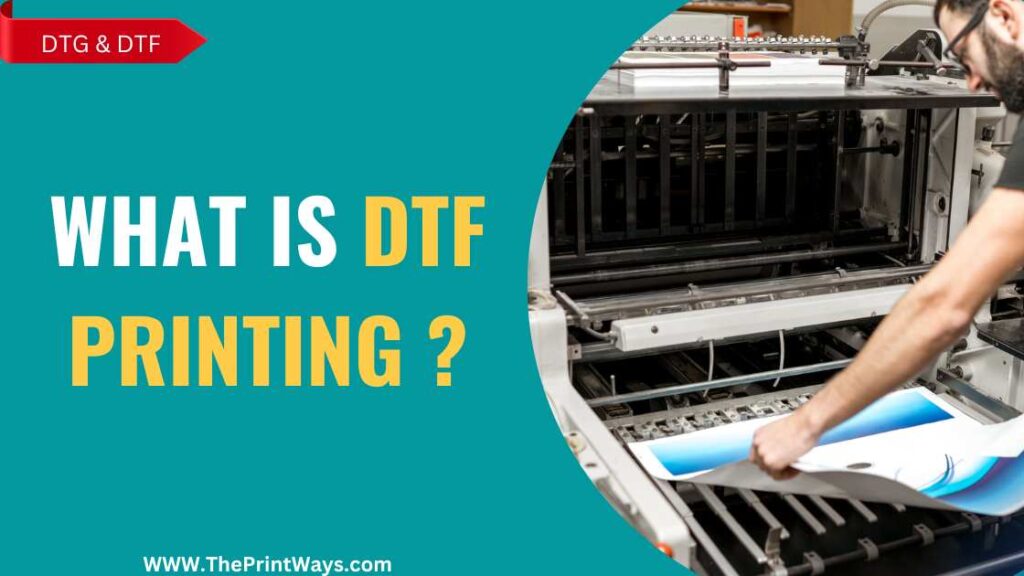Shirt printing is a popular way to express your style and make a statement. From customizing t-shirts with slogans to creating unique designs, there are plenty of options out there for making the perfect shirt. But what types of printing are available?
Shirt printing has come a long way since its early days when it was used mainly for advertising and promotional purposes.
Today, you can choose from a variety of techniques for creating shirts that reflect your own personal style.
Whether you want to create something totally unique or simply customize an existing design, it’s possible with shirt printing!
So what are some of the most common types of shirt printing? We’ll cover screen printing, digital printing, embroidery, sublimation, and more – allowing you to get creative and find the best method for your needs!
1. Screen Printing

Screen printing is a famous method that involves putting ink on a surface by pushing it through a mesh screen. Some parts of the screen are blocked by a mask, which lets the ink get to the material below.
It is known for being able to make bright, high-quality pictures with clear details. Screen printing can be done on linens, paper, and plastics, among other things.
But it needs different screens for each color, which makes it slow for complicated designs.
It is cost-effective for printing in large amounts, but the setup costs and equipment required make it less ideal for printing in small quantities or just once.
-
Pros
✅ Excellent for printing high-quality, vibrant designs with precise details.
✅ Suitable for a wide range of materials, including fabrics, paper, and plastics.
✅ Cost-effective for large production runs, as the per-unit cost decreases with quantity.
-
Cons
❌ Limited color options per design, requiring separate screens for each color.
❌ Time-consuming setup process, especially for complex designs.
❌ Not ideal for printing small quantities or one-off designs due to setup costs.
2. Direct To Garment Printing

DTG printing, which stands for “Direct-to-Garment,” uses special inkjet technology to print designs straight onto clothes. It lets you print in full color and high quality, with fine details.
DTG printing can be done on fabrics like cotton, polyester, and mixes of the two. It works well for small production runs or designs that are made to order because there is no need for screens or plates.
DTG printing can be expensive if you want to print a lot of things, and printing on dark-colored clothes often needs a white base, which limits its uses.
-
Pros
✅ Enables high-resolution, full-color printing with intricate details.
✅ Supports printing on various fabric types, including cotton, polyester, and blends.
✅ Suitable for small production runs or one-off custom designs.
-
Cons
❌ Cost per unit can be relatively high for large quantities.
❌ Limited in terms of printing on dark-colored garments, as white underbase is often required.
❌ Requires specialized equipment and maintenance, which can be expensive.
3. Heat Transfer Printing

In heat transfer printing, an image is moved from a carrier paper or film to a substrate by applying heat and pressure.It is a flexible method that can be used with a wide range of materials, such as cloth, ceramics, and metals.
With heat transfer, you can make complicated, full-color patterns that feel soft on clothes.Because it is easy to set up and change, it is often used for small quantities or personalized things.
But the design’s durability can rest on the quality of the transfer material, and the extra layer can make it harder for fabrics to breathe.
It can also cost more per bit when there are a lot of them.
-
Pros
✅ Versatile method that can be used on various materials, including fabrics, ceramics, and metals.
✅ Allows for intricate, full-color designs with a soft feel on garments.
✅ Suitable for small quantities or personalized items due to easy setup and customization.
-
Cons
❌ Design durability may vary depending on the quality of the transfer material used.
❌ Limited breathability on fabrics due to the additional layer of transferred material.
❌ Can be more expensive per unit compared to other methods for large production runs.
4. Vinyl Cutting
Vinyl cutting involves using a machine that is controlled by a computer to cut designs out of vinyl. The patterns are then stuck to a surface with heat or pressure-sensitive glue.
It is often used to make designs that last on different kinds of fabrics, but it works best on hard surfaces and not on fabric.
Vinyl cutting lets you choose from a wide range of colors and styles, such as metallic and special effects.
But it can’t show fine details or complicated patterns, and the vinyl can peel or crack over time, especially if it gets washed or worn a lot.
-
Pros
✅ Ideal for producing durable, long-lasting designs on a variety of materials.
✅ Offers a wide range of color options, including metallic and specialty finishes.
✅ Can be used for both small and large quantities, as setup costs are minimal.
-
Cons
❌ Limited in terms of intricate details and complex designs.
❌ Not suitable for printing on fabric directly; it works best for rigid surfaces.
❌ Prone to peeling or cracking over time, particularly with frequent washing or wear.
5. Embroidery

Embroidery is an old technique that includes using special sewing machines to stitch designs onto a surface.
It gives designs a professional, glossy look that gives them more depth. Embroidery is very long-lasting and doesn’t fade or peel over time.
It can be used on many things, like clothes, hats, bags, and decorative items. But embroidery isn’t as good as other printing methods when it comes to color patterns and small details.
Setup costs can be high, especially for designs that are complicated or large, and it’s not great for thin or stretchy materials.
-
Pros
✅ Offers a professional, textured look that adds dimension to designs.
✅ Highly durable and resistant to fading or peeling over time.
✅ Suitable for various items, including clothing, hats, bags, and promotional products.
-
Cons
❌ Limited in terms of color gradients and fine details compared to other printing methods.
❌ Embroidery setup costs can be high, particularly for complex or large designs.
❌ Not ideal for printing on very thin or stretchy materials.
6. Sublimation Printing

For sublimation printing, sublimation inks are used to make designs on special sublimation paper, and then heat is used to transfer the designs to a substrate.
The sublimation process changes the ink into a gas, which lets it get into the material and make prints that are bright, last a long time, and have good color saturation.
Sublimation printing works best on polyester-based fabrics or items with a polymer coating. It also lets you print high-resolution, full-color patterns that become part of the material.
-
Pros
✅ Produces vibrant, long-lasting prints with excellent color saturation.
✅ Ideal for printing on polyester-based fabrics or items with a polymer coating.
✅ Allows for full-color, high-resolution designs that are integrated into the material.
-
Cons
❌ Limited to white or light-colored substrates, as the dye becomes transparent.
❌ Requires specialized equipment, including heat presses and sublimation inks.
❌ Not suitable for natural fabrics, such as cotton, as they lack the necessary polymer coating.
7. Dye-Sublimation Printing
This is a type of sublimation printing that uses heat to transfer color to materials made of polyester. It can make pictures that are bright, high-resolution, and have great color saturation and resistance to fading.
Dye sublimation printing can be done on a wide range of polyester-based things, including fabrics and hard materials. It makes it possible to print drawings that look like photos and are in full color.
But it only works on white or light-colored substrates, needs special tools and sublimation inks, and can’t be used on natural fabrics or things that don’t have a polyester coating.
-
Pros
✅ Offers vibrant, high-resolution prints with excellent color saturation and fade resistance.
✅ Suitable for a wide range of polyester-based items, including fabrics and rigid materials.
✅ Allows for full-color, photo-realistic designs that become part of the material.
-
Cons
❌ Limited to white or light-colored substrates, as the dye becomes transparent.
❌ Requires specialized equipment and sublimation inks, which can be costly.
❌ Not suitable for natural fabrics or items without a polyester coating.
8. Direct To Film Printing

DTF printing, which stands for “direct-to-film,” involves printing images on a special film and then using heat to transfer the film to the garment.
This method makes prints that are bright, high-quality, and accurate in terms of color. DTF printing can be done on materials like cotton, polyester, and blends. It can also be done on both light-colored and dark-colored clothes.
But the extra step of transfer makes the process longer, especially for patterns with more than one color. Compared to other ways of printing, the end product might also feel a little bit thicker.
-
Pros
✅ Provides vibrant, high-quality prints with excellent color accuracy.
✅ Supports printing on various fabrics, including cotton, polyester, and blends.
✅ Allows for printing on both light and dark-colored garments.
-
Cons
❌ Requires additional steps, such as transferring the printed film onto the garment using heat.
❌ The process can be time-consuming, especially for multi-color designs.
❌ May result in a slightly thicker feel compared to other printing methods.
9. Foil Transfers
In foil transfer printing, a metallic foil is pressed and heated onto a medium. It gives images a high-end look by giving them a metallic, reflective finish.
Foil transfers come in a variety of colors and styles, like holographic and patterned foils. They can be used on linens, paper, and plastics, among other things.
But foil transfers aren’t good for small features and small text because the foil might not stick well. The foil may wear off over time, and setting up the transfer can take a long time because it needs heat and pressure to work.
-
Pros
✅ Provides a metallic, reflective finish that adds a premium look to designs.
✅ Offers a range of colors and finishes, including holographic and patterned foils.
✅ Can be applied to various materials, including fabrics, paper, and plastics.
-
Cons
❌ Limited in terms of intricate details and small text, as the foil may not adhere properly.
❌ Foil may wear off over time, particularly with frequent washing or friction.
❌ The setup process can be time-consuming, requiring heat and pressure for transfer.
Conclusion
As you can see, there are many different types of shirt printing to choose from. Depending on your needs and budget, one of these methods may be the best option for you.
At the end of the day, understanding your needs and budget will help you decide which type of shirt printing method is right for you.

